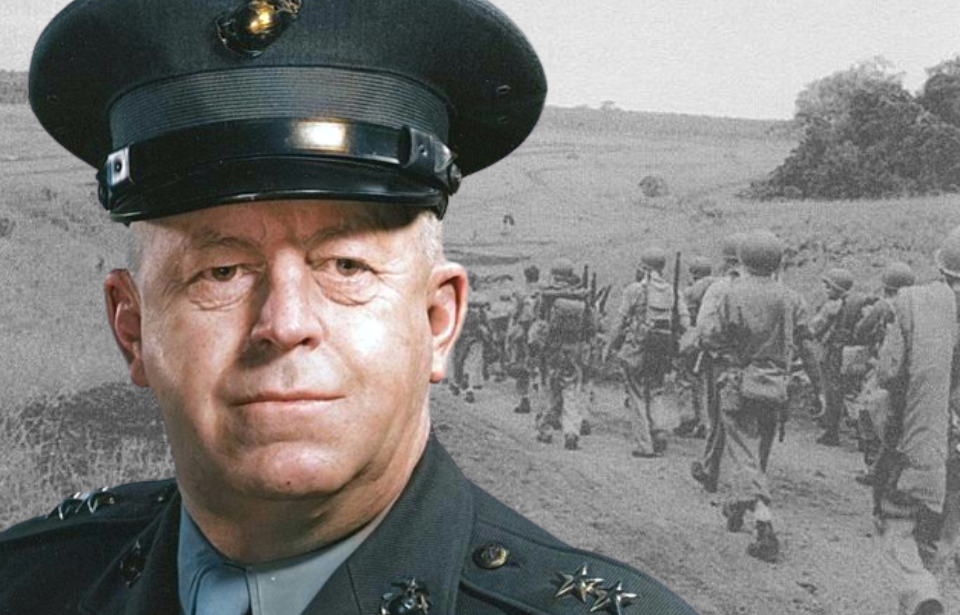After more than a day of nonstop fighting, the 1st Marine Raider Battalion braced for yet another night of relentless assault. Heavily outnumbered—just 830 Marines against over 2,500 Japanese troops—the odds were grim. At this critical moment, Col. Merritt Edson addressed his men and offered them a simple, powerful message.
“You men have done a great job, and I have just one more thing to ask of you. Hold out just one more night,” he urged. “I know we’ve been without sleep a long time. But we expect another attack from them tonight and they may come through here. I have every reason to believe that we will have reliefs here for all of us in the morning.”
Galvanized by Edson’s words and unwavering determination, the Marines fortified their position and withstood a ferocious overnight assault. Though outnumbered and drained, they refused to give ground. Their stand turned the tide, securing a strategic stronghold on Guadalcanal and earning the battle a permanent place in Marine Corps lore as “Edson’s Ridge”—a name that endures as a symbol of courage, resolve, and extraordinary leadership.
Merritt Edson’s entry into the US military
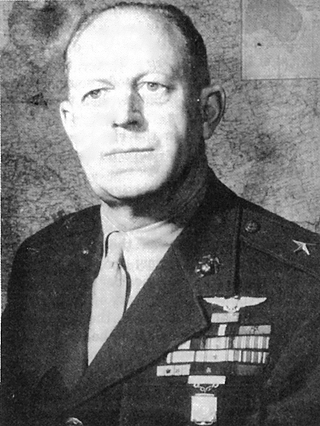
Merritt “Red Mike” Edson’s military career was characterized by impressive growth, beginning as a private in the Vermont National Guard and rising to the rank of major general in the US Marine Corps. Born in Vermont in 1897, Edson enlisted in the First Infantry Regiment of the National Guard in 1916.
After a hiatus, he resumed his education at the University of Vermont and, in October 1917, joined the Marine Corps Reserve, where he was commissioned as a second lieutenant. Though stationed in France with the 11th Marine Regiment, he did not see combat the First World War.
1st Marine Raider Battalion
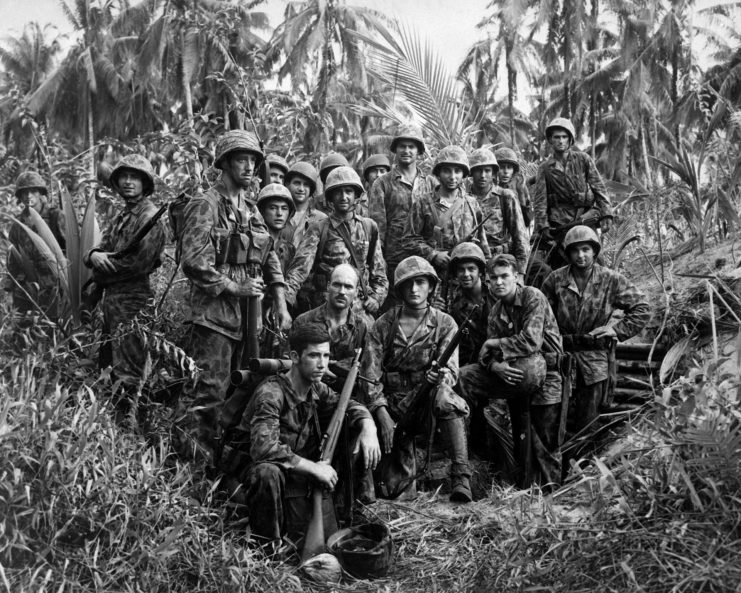
After World War I, Merritt Edson undertook a variety of assignments, eventually developing a strong interest in aviation. In 1922, he earned his pilot’s wings and was posted to the Marine Naval Air Station in Guam, where he carried out reconnaissance missions over nearby islands—some of which were later named in his honor. However, due to medical issues, Edson was forced to give up flying and return to traditional ground duties.
His first taste of combat came during a deployment to Nicaragua in 1928–29, where he led a Marine detachment in active operations and received the Navy Cross for his outstanding leadership under fire. During the 1930s, Edson continued to rise through the ranks, gaining valuable experience and eventually becoming a colonel as the world edged toward World War II.
In 1942, Edson took command of the 1st Battalion, 5th Marine Regiment and oversaw its transformation into the newly formed 1st Marine Raider Battalion. His bold and decisive leadership during the early stages of World War II, particularly at the Battle of Guadalcanal, solidified his reputation as one of the Marine Corps’ most respected and legendary officers.
Merritt Edson prepare’s his men for a fierce encounter
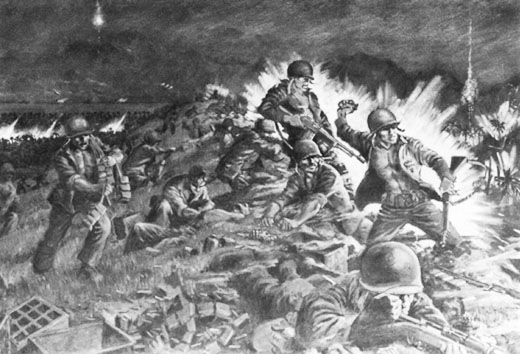
In August 1942, U.S. forces landed on Guadalcanal and quickly seized a key Japanese airstrip still under construction. Renamed Henderson Field, the airstrip became a vital strategic asset—and a target the Japanese were determined to take back at any cost.
Over the next several months, the battle for control of the island raged fiercely. Among the American units on the front lines was Col. Merritt Edson’s 1st Marine Raider Battalion. On the evening of September 12, they were positioned in reserve near the airfield, expecting a rare moment of rest. But that respite was cut short when a powerful Japanese offensive slammed into their lines.
As the enemy advanced and chaos threatened to overrun their position, Edson ordered a tactical withdrawal to a ridgeline roughly 400 yards to the south. There, he regrouped his Marines and prepared them to make a final stand. That stretch of high ground—later named “Edson’s Ridge”—would become the scene of one of the most intense and heroic battles of the Guadalcanal campaign. Rallying his exhausted troops, Edson urged them to dig in and hold fast, no matter what came. Their resolve over the next grueling hours would prove decisive.
Battle of Edson’s Ridge
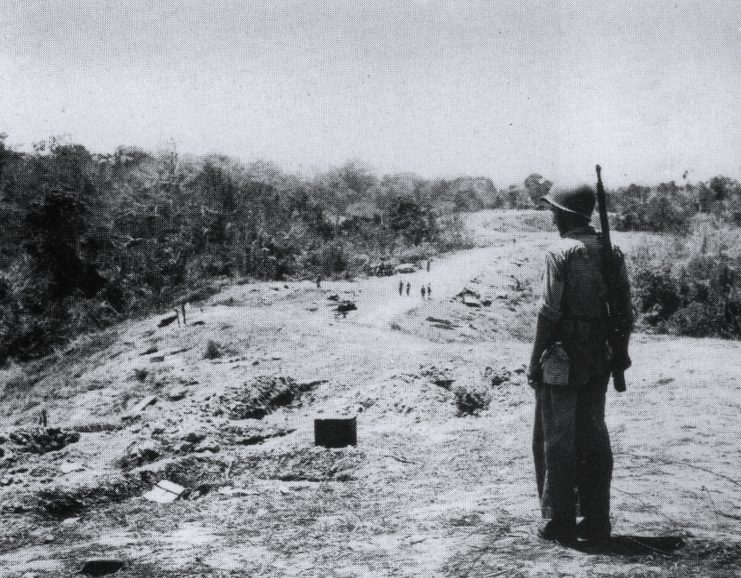
As anticipated, approximately 2,500 Japanese soldiers emerged from the jungle and launched a full-scale assault against the 830 Marines. The Japanese forces initially succeeded in overrunning some Marine positions, leaving their flanks perilously exposed. One officer later recounted, “The Japanese attack was almost constant, like a rain that subsides for a moment and then pours the harder… When one wave was mowed down – and I mean mowed down – another followed it into death.”
As parts of the 1st Marine Raider Battalion started to retreat, they encountered Merritt Edson, who always knew exactly what to say to motivate them to fortify their defenses around Hill 123. It’s said his men would follow him anywhere, with their only challenge being to keep pace with him.
The morning after the intense engagement

As dawn broke the following morning, Merritt Edson’s Marines remained in control of Hill 123, having successfully repelled the Japanese assault. While the world may know this location as “Bloody Ridge,” those who fought there will forever remember it as Edson’s Ridge, a testament to their commander’s unwavering determination to defend it at all costs.
In recognition of his valor and leadership amid constant enemy fire, Edson was awarded the Medal of Honor, having earned the admiration and respect of every man who witnessed his actions. Throughout the remainder of the Second World War, he continued to serve with distinction, eventually rising to the rank of brigadier general and receiving his first star. Retiring from the Marine Corps in 1947 as a major general, Edson continued to serve his nation in various civilian capacities.
More from us: Was Herbert Sobel Really As Horrible As ‘Band of Brothers’ Made Him Out to Be?
In recognition of his exemplary service and bravery, not only did Merritt Edson receive personal awards for gallantry, but the USS Edson (DD-946), a Forrest Sherman-class destroyer, was commissioned in his honor. Furthermore, a section of Camp Pendleton, where Marine recruits hone their marksmanship skills, was dedicated in his name.
